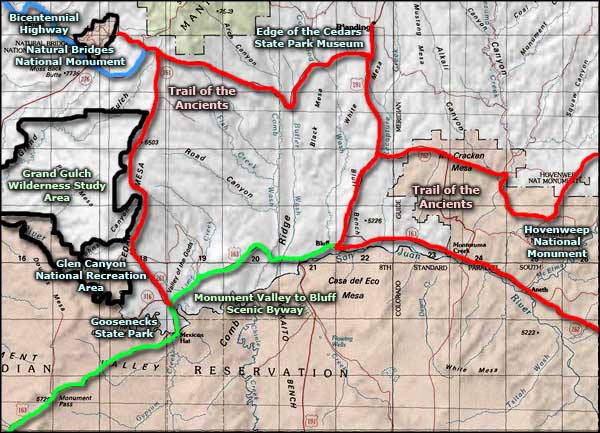Hovenweep National Monument
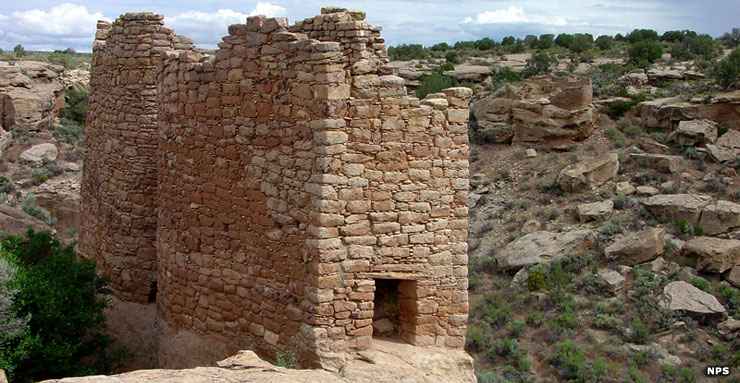
Hovenweep National Monument
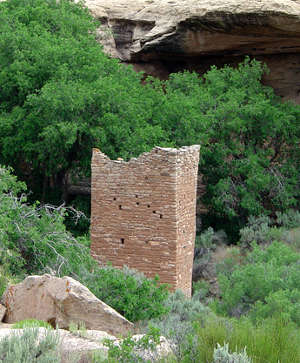
The Square Tower
Hovenweep National Monument is spread across a 20-mile expanse of canyons and mesas straddling the Utah-Colorado border. Within the boundaries of Hovenweep National Monument are the remains of 6 Ancestral Puebloan villages. The greater part of these villages were built between 1150 and 1300 CE, about the same time as the cliff dwellings at Mesa Verde National Park.
There are traces of humans inhabiting the Hovenweep area that go back about 10,000 years. Nomadic Paleo-Indians traveled through the area seasonally gathering food and hunting. Farmers first appeared about 500 CE and the first settlements began to crop up shortly after that. The population grew steadily. The larger towers and fortresses that we see today, at the top of box canyons where springs and seeps occur, weren't built until 1150 CE to 1200 CE. Around that time the people also began constructing check dams and reservoirs, then moving their agricultural fields to be closer to those water sources. Archaeological and cultural evidence indicates that a severe, prolonged drought caused the entire area to be abandoned starting in the mid-to-late 1200's CE, with virtually no one living there by about 1350 CE. A nomadic Southern Athabaskan-speaking tribe moved into the area about 300 years later. The Spanish called them "Navajo."
Most of the people in the area migrated to the south and southeast: The Hopi Mesas and the Jemez Mountains, Pajarito Plateau and the Rio Grande Valley. This was at the same time that Mesa Verde, the Little Colorado River pueblos, the Jornada Mogollon pueblos and the Salado and Sinagua pueblos were collapsing in the face of the same prolonged drought. When the drought was over, the Utes and Navajos came in and occupied the depopulated countryside.
The constructions left at Hovenweep are very similar to those the Ancestral Puebloans left at Mesa Verde, although the buildings at Hovenweep show much more attention to detail and more careful construction. After more than 700 years, buildings that were constructed on top of irregular boulders are still standing. Hovenweep Castle, in the Square Tower Group, has a series of doors and slots built into it that define a solar calendar in its interior: on equinoxes and solstices, the sunlight shines directly on particular interior door lintels. In 800 years the structure hasn't shifted enough to disturb that.
Hovenweep National Monument is in a pretty secluded area of southeastern Utah. There is a visitor center, campground and interpretive trail close to the Square Tower Group but most of the Monument is undeveloped and the roads are rough. That area east of the Colorado-Utah state line has become Canyons of the Ancients National Monument.

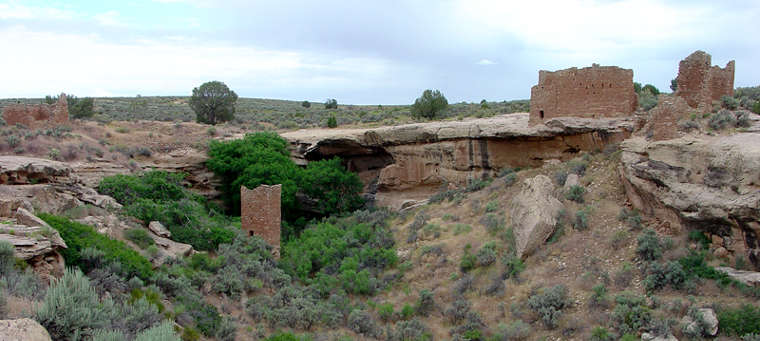
Hovenweep Castle and the Square Tower Group
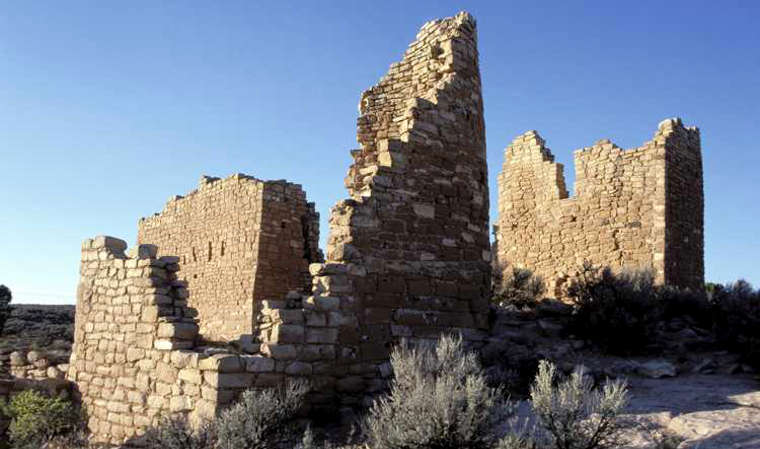
Another view of Hovenweep Castle
